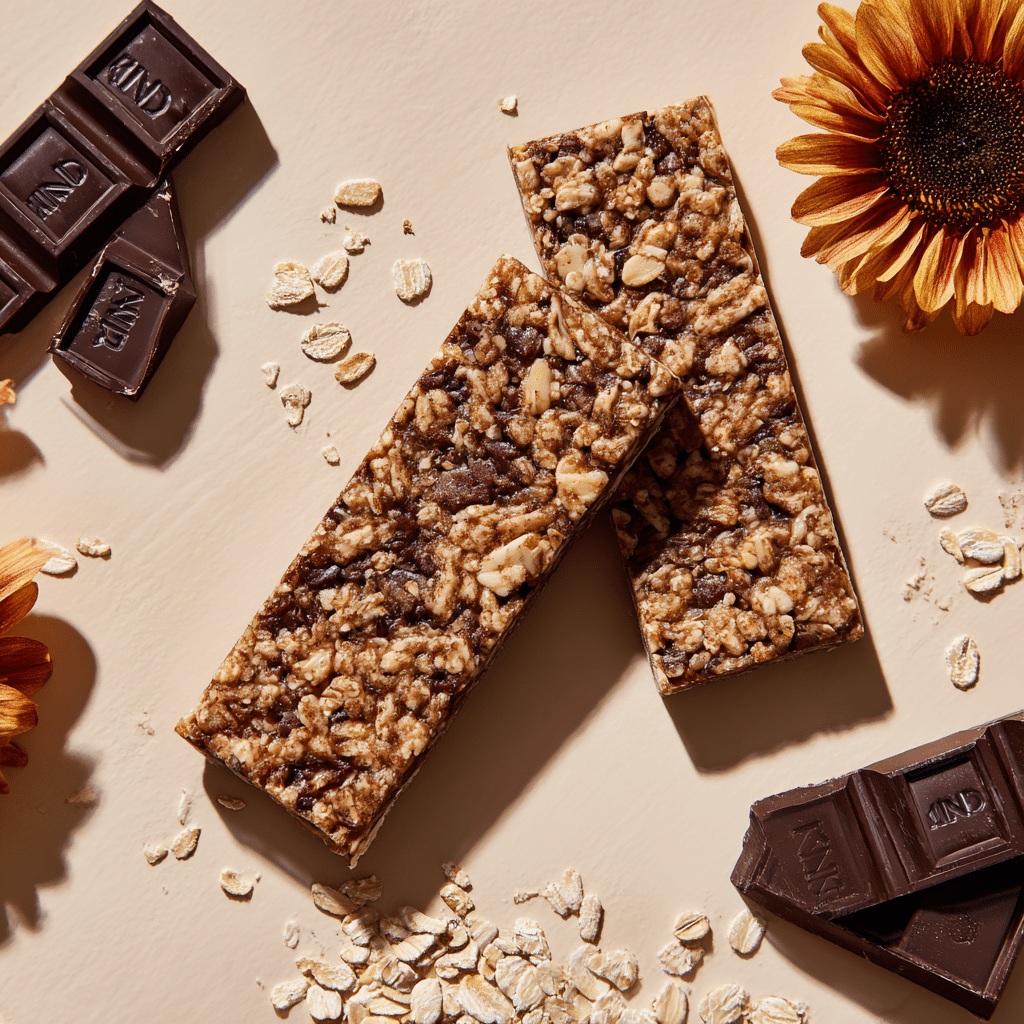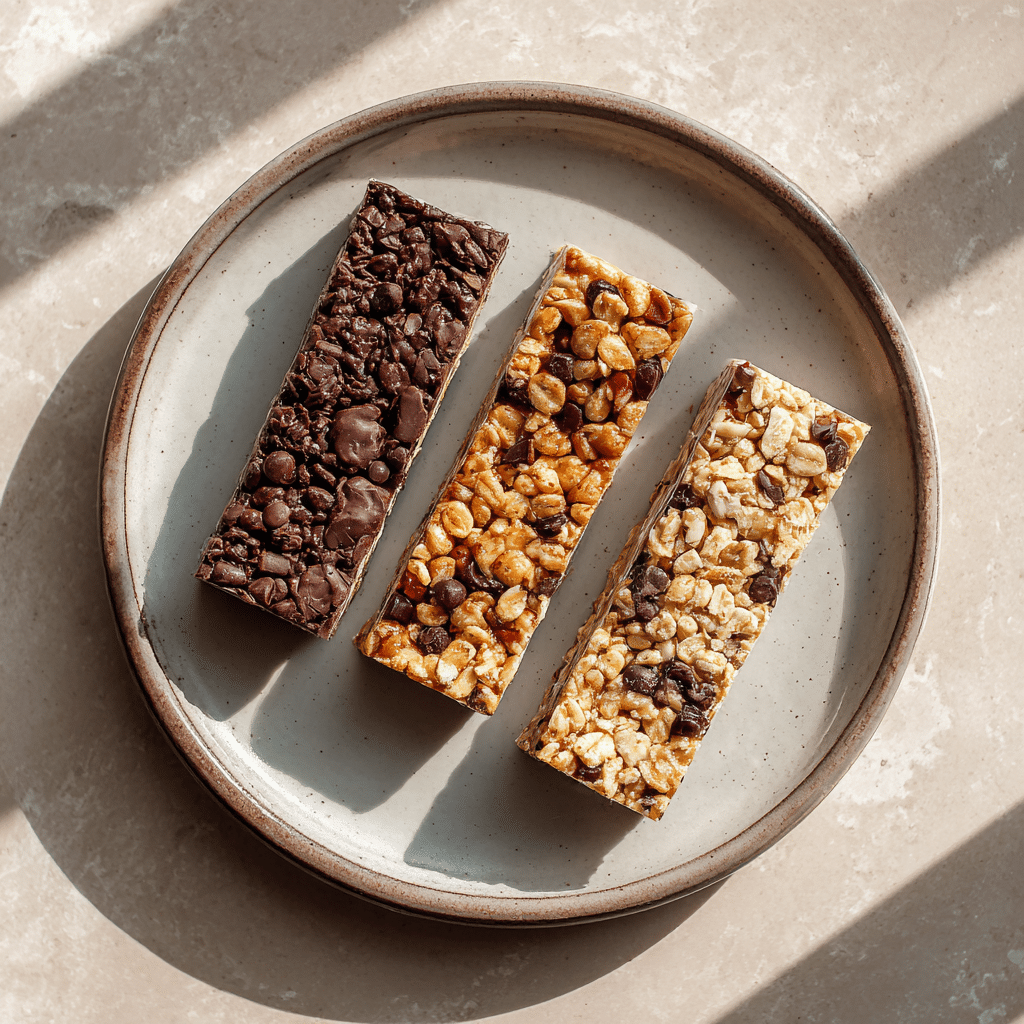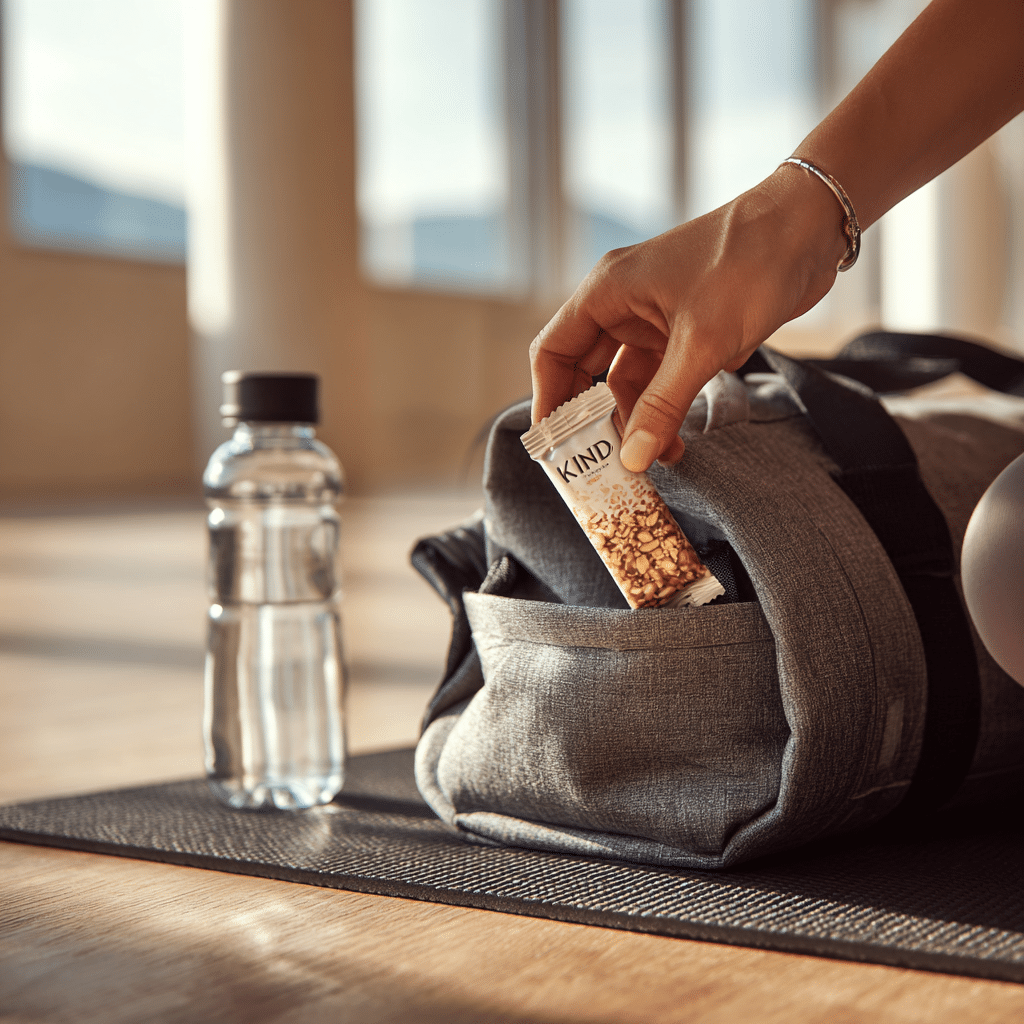If you’ve ever stood in the snack aisle, eyeing KIND Bars with “prebiotic fiber” boldly printed on the label, you’re not alone. But while the packaging looks healthy, many of us wonder if they are truly good for your gut or just another trendy marketing buzzword. In this article, we’ll break down what makes these bars different, how prebiotic fiber actually works, and whether these snacks belong in your daily routine. You’ll get a clear explanation of ingredients like chicory root fiber, an honest look at sugar and digestion concerns, and a verdict that considers real-life needs. Let’s dive into the truth behind the wrapper.
Table of Contents
KIND Bars with Prebiotic Fiber: My Real Mom-Life Take
When I first picked up a KIND Bar with prebiotic fiber, I was mid-grocery dash with two cranky kids and zero time to analyze labels. The word “fiber” felt like a win, and it slipped into my cart with hopeful logic. This has to be better than cookies, right? That bar saved me from a vending machine disaster in the school pickup line, and it got me curious. What exactly makes this KIND Bar different? Why prebiotics? Now, as a mom who’s turned accidental snacks into research projects, I want to share what I’ve learned so you can decide if they’re worth adding to your pantry too.

What Makes Prebiotic Fiber Special?
Most people confuse prebiotics with probiotics. They sound alike, but they serve different roles. Probiotics are live bacteria like those found in yogurt that can benefit your gut. Prebiotics, on the other hand, are dietary fibers that feed those beneficial bacteria, helping them thrive and multiply. It’s like fertilizer for your gut garden.
KIND Bars with prebiotic fiber use chicory root fiber as their primary source. This ingredient is naturally rich in inulin, a type of soluble fiber known to help boost digestion, support regularity, and encourage a balanced gut microbiome. Unlike typical granola bars that rely on oats and sugar alone, these bars give your digestive system something extra to work with.
Why KIND’s Use of Chicory Root Fiber Matters
Chicory root fiber isn’t just filler. Studies show it can help increase the number of healthy gut bacteria like Bifidobacteria. It may also help reduce appetite and cravings by promoting a feeling of fullness. That’s a major plus if you’re using these bars to curb snacking between meals.
Compared to many traditional granola bars or even protein bars that are high in sugar and low in real fiber, KIND’s inclusion of chicory root is a deliberate health-forward move. But it’s also important to remember that everyone’s digestive system reacts differently. Some may find this fiber beneficial, while others with sensitive stomachs may need to ease in slowly.
If you’re already exploring gut-supporting foods like this cottage cheese bowl with flaxseed or gut-friendly protein snacks, you’ll appreciate how KIND Bars with prebiotic fiber complement that approach.
Which KIND Bars Contain Prebiotic Fiber? A Clear Breakdown
Not all KIND Bars contain prebiotic fiber. That can be confusing when you’re trying to make a quick snack decision. The bars that specifically include prebiotic fiber are part of the KIND Healthy Grains® line, which focuses more on whole grains and added fiber rather than nuts and chocolate.
You’ll usually find “prebiotic fiber” noted right on the front of the package or listed in the ingredients as chicory root fiber. Here’s a helpful breakdown of the most common options, so you can spot them easily.
Popular Flavors That Feature Prebiotic Fiber
These KIND Healthy Grains® flavors are widely available and include added chicory root fiber:
1. KIND Healthy Grains Oats & Honey with Toasted Coconut
Texture: Soft, chewy, and slightly crisp thanks to the coconut.
Flavor: A gentle sweetness from honey and a nutty coconut undertone.
Nutrition Highlights (per bar):
- Fiber: 5g
- Protein: 3g
- Sugar: 6g
- Main Ingredients: Five super grains including oats, millet, quinoa, and amaranth, plus chicory root fiber.
2. KIND Healthy Grains Peanut Butter Dark Chocolate
Texture: Crisp and chewy blend. Not overly sticky.
Flavor: Satisfying peanut butter base with a mild chocolate drizzle.
Nutrition Highlights (per bar):
- Fiber: 5g
- Protein: 5g
- Sugar: 8g
- Main Ingredients: Peanut butter, oats, brown rice, chicory root fiber.
3. KIND Healthy Grains Dark Chocolate Chunk
Texture: Crisp and layered with mini chocolate chunks.
Flavor: Mild sweetness with hints of vanilla and dark chocolate.
Nutrition Highlights (per bar):
- Fiber: 4g
- Protein: 3g
- Sugar: 7g
- Main Ingredients: Oats, buckwheat, millet, and chicory root fiber.
You can also check the ingredient list for inulin or chicory root extract to verify fiber sources. These bars are designed to offer a subtle way to support gut health while satisfying a sweet craving.

If you’re already rotating in smart snacks like this apple almond butter snack or a protein chia pudding, these KIND Bars can be a great packaged backup for busy days.
The Health Benefits: Why Choose a Prebiotic Bar?
There’s a reason prebiotic fiber has made its way into more snacks lately. It isn’t just about digestion. It’s about overall gut function, immunity, and even appetite regulation. KIND Bars with prebiotic fiber bring these benefits into an everyday format. Let’s break down what that means for your body and why these bars might deserve a spot in your snack rotation.
Gut Health: Feeding the Good Bacteria
Your digestive tract houses trillions of bacteria. The good ones, like Bifidobacteria and Lactobacilli, help protect against inflammation, boost immunity, and even support mood balance. But these beneficial microbes need fuel. That’s where prebiotics come in.
Chicory root fiber, the key prebiotic in KIND Bars, feeds these bacteria and helps them flourish. Research shows that regularly consuming prebiotics like inulin can improve the balance of gut flora, leading to a healthier, more resilient microbiome.
Unlike many snacks that offer empty carbs, KIND’s use of chicory root gives your gut something useful. It’s not just about avoiding junk. It’s about giving your system a gentle nudge in the right direction.
Digestive Regularity and Satiety
Another major benefit of fiber is that it keeps things moving. Soluble fiber like inulin absorbs water in the gut, helping to bulk up stool and promote regularity. This can be especially helpful for anyone who struggles with occasional constipation or irregular digestion.
Beyond that, fiber helps you feel full. A bar with 5 grams of prebiotic fiber may help tide you over between meals better than a sugary granola bar with little to no fiber. That means fewer blood sugar spikes, fewer energy crashes, and fewer impulse snack runs.
Some studies also suggest that chicory root fiber may help regulate ghrelin, the hunger hormone. This may explain why high-fiber snacks help reduce cravings and encourage mindful eating.

If you’re already focusing on protein-and-fiber combos like gut-friendly protein snacks, these bars can add some portable fiber without requiring refrigeration or prep.
Are There Any Downsides? An Honest Look
KIND Bars with prebiotic fiber offer real benefits, but that doesn’t mean they’re perfect for everyone. Like any processed snack with functional ingredients, they come with a few considerations worth knowing. Here’s what to keep in mind before making them your daily go-to.
Digestive Sensitivity: Start Slow if You’re New to Chicory Root
For most people, a few grams of chicory root fiber per day is gentle and beneficial. But for others, especially those with irritable bowel syndrome (IBS) or sensitive digestion, it may cause bloating, gas, or cramping, particularly if introduced suddenly or in large amounts.
This happens because chicory root is a FODMAP, a type of fermentable carbohydrate that some people don’t tolerate well. If you’ve never had it before, start with half a bar and observe how your body reacts. Many people adjust over time, but it’s smart to ease in gradually.
If you follow a low-FODMAP plan or are sensitive to fermentable fibers, you might be better off with simpler snacks like a banana with peanut butter and hemp seeds that still offer fiber but in a more whole-food format.
Sugar Content: Better Than Candy, But Still a Treat
KIND Bars with prebiotic fiber typically contain between 6 and 8 grams of sugar per bar. That’s lower than most conventional granola bars, but it’s still something to be aware of, especially if you’re trying to cut down on added sugars.
To put it in perspective, a bar might have about the same sugar as a small apple or half a cookie. It’s not excessive, but it’s not insignificant either. The key is context. If the bar is replacing a sugar-heavy pastry or soda, it’s clearly a step up. But it shouldn’t be viewed as a zero-sugar health food.
Pairing it with a high-protein snack or including it after a meal can help prevent a blood sugar spike. It’s also worth noting that the sugar is often balanced by fiber and healthy fats, which help slow digestion and blunt the sugar impact.
Some readers may prefer to make their own low-sugar options, but for most busy families, KIND’s balance of fiber, flavor, and convenience is a smart compromise.
FAQs
Are KIND bars actually healthy?
KIND Bars, especially those with prebiotic fiber, are a healthier snack option compared to most traditional granola or candy bars. They contain a blend of whole grains, fiber, and moderate protein, which helps with fullness and blood sugar control. However, they still include added sugars and should be viewed as a convenient upgrade, not a substitute for fresh whole foods like apple almond butter snacks. The healthiest approach is using them to bridge gaps in your day, not replace meals.
What is a prebiotic bar?
A prebiotic bar includes specific types of fiber that nourish the good bacteria in your gut. In the case of KIND’s Healthy Grains line, chicory root fiber is the key ingredient providing this benefit. These bars help promote digestion and support a balanced microbiome, which can affect immunity and metabolism. If you’re also eating gut-supportive meals like cottage cheese with flax and cucumber, these bars can be a helpful complement on busy days.
What are the healthiest fiber bars?
The healthiest fiber bars contain at least 4 grams of fiber, low added sugars, and recognizable ingredients. KIND Healthy Grains Bars with prebiotic fiber rank well because they use real whole grains and avoid artificial additives. Other top options include bars with nuts, seeds, and plant-based proteins. Always check the ingredient label for sources of fiber like oats, flaxseed, or chicory root, and try to avoid syrups or processed fillers when possible.
What protein bars are gut friendly?
Gut-friendly protein bars focus on fiber and ingredients that support digestion, not just high protein counts. KIND Bars with prebiotic fiber offer around 3 to 5 grams of protein and 4 to 5 grams of fiber per bar, making them a solid gut-supportive option. If you want something with more protein and fiber combined, you can pair them with snacks like protein blueberry peanut butter chia pudding for better balance.
The Verdict: Should You Eat KIND Bars with Prebiotic Fiber?
If you’re looking for a quick snack that supports gut health without requiring a blender or cutting board, KIND Bars with prebiotic fiber are a smart option. They combine fiber-rich whole grains with chicory root to deliver digestive benefits in a portable, tasty format.
Who They’re Great For:
These bars work well for anyone who wants a convenient, better-than-average snack. They’re especially helpful if you’re trying to increase daily fiber intake or maintain regular digestion while on the go. Busy parents, students, or professionals will appreciate their balance of flavor, function, and ease.
Who Should Be Cautious:
If you have a sensitive stomach, IBS, or follow a low-FODMAP diet, start with small portions. Chicory root fiber can trigger bloating in some individuals. Also, if you’re actively monitoring your sugar intake, keep in mind that the added sweetness, while moderate, is still present.
Compared to Other KIND Bars:
The prebiotic versions focus more on fiber and whole grains, while classic KIND Nut Bars lean into healthy fats from nuts and lower carb counts. If you value gut health over calorie control, the Healthy Grains line is the better pick.
Compared to Other Prebiotic Snacks:
Bars like OLIPOP sodas or high-fiber cookies may also contain prebiotics, but often lack the grain base and texture of a true snack. KIND Bars offer a practical middle ground between indulgent and functional.
Final Takeaway:
If you already enjoy KIND products, giving the prebiotic versions a try makes sense. They offer a nutritional edge many snack bars lack and fit seamlessly into a real-life routine that includes other smart options like gut-friendly protein snacks or easy yogurt bowls. For fiber, function, and flavor in one bar, they hit the mark.
Disclaimer:This article is for informational purposes only and is not intended to replace professional medical advice. Always consult a healthcare provider before making changes to your diet, especially if you have digestive issues, food sensitivities, or medical conditions. You can learn more about prebiotics and gut health from reliable sources like Cleveland Clinic’s guide to prebiotic fiber.




